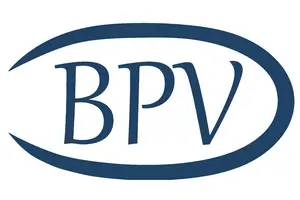
6 Tips for Mastering Computer System Configuration Management: A Blue Print For Validation Managers
In the realm of computer system validation, configuration management plays a vital role in ensuring the integrity, reliability, and compliance of computer systems used in regulated industries. It is essential for validation managers to have a robust method in place for effective computer system configuration management. This article explores six significant considerations when managing system configurations:
1. Documented Configuration Baseline:
Identify and define the configuration items (CIs) within the computer system. CIs are the components or elements that make up the system, such as hardware, software, firmware, software settings, training packages and technical documentation e.g. manuals. Create a comprehensive inventory of these items and establish baselines for each. This should include versions, numbers and a unique ID for each component. This baseline serves as a reference point throughout the system’s lifecycle, allowing for accurate change management, validation activities and defining the system scope.
2. Version Control and Baseline Management:
Implement version control mechanisms to manage changes to CIs throughout the system lifecycle. This includes maintaining a centralised repository for all system documentation and ensuring proper versioning and access controls. Consider using documents to act as the configuration inventory. For example, configuration specification OR software tools such as Jira.
3. Change Control Procedures:
Implementing rigorous change control procedures is crucial to maintaining computer system configuration integrity. A formal change control process ensures that any modifications or updates to the system are thoroughly reviewed, authorised, tested and documented. This process should include an impact assessment, risk evaluation, and a validation strategy for each change. In the change control process, it is essential to involve all relevant stakeholders, including IT personnel, quality assurance, validation, and users.
4. Validation Testing:
Validation managers should design and execute comprehensive testing protocols to ensure that any changes to the system do not negatively impact its intended functionality, data integrity, or compliance status. This includes the execution of test protocols, such as installation qualification (IQ), operational qualification (OQ), and performance qualification (PQ), depending on the criticality of the change. Maintain comprehensive records of all testing and validation activities. Testing should cover not only the specific changes but also their potential impact on related processes, interfaces, and data integrity. For simple configuration changes that are low risk, verification of correct implementation and effectiveness may be sufficient.
5. Periodic Review and Auditing:
Regular review and auditing of the system configuration are essential to identify and rectify any configuration drifts or unauthorised changes. These reviews should be conducted by cross-functional teams, including representatives from IT, quality assurance, and regulatory compliance. The review should focus on ensuring that documented configuration remains accurate and up to date, while also addressing any uncontrolled changes that may have occurred.
6. Training and Documentation:
Proper training and documentation are key to successful computer system configuration management. All personnel involved in managing, maintaining, and using the system should receive adequate training on configuration management practices, change control procedures, and the importance of maintaining the integrity of the system. Additionally, comprehensive documentation should be maintained, including system manuals, user guides, standard operating procedures (SOPs), and change control records. It is also important to identify ownership of CI’s eg. Network settings are typically the responsibility of IT and workflow or alarm settings are typically the responsibility of users.
Conclusion:
Effectively managing computer system configurations is critical to ensure data integrity, maintain system functionality, and comply with regulatory requirements. By implementing a methodical approach, including a documented configuration baseline, change control procedures, validation testing, periodic reviews, training, and compliance measures, validation managers can establish a robust computer system configuration management framework. This approach not only enhances the reliability and performance of computer systems but also strengthens the organisation’s overall compliance.
To find out more about our validation services, please contact us at [email protected]

fantastic post, very informative. I’m wondering why the opposite
specialists of this sector don’t understand this.
You should proceed your writing. I’m sure, you have a great readers’ base already!
My web-site John E. Snyder
Thanks for your kind words, John! We’re glad you found the post informative. Would you like to join our Validation Insights mailing list for more articles? Please subscribe to our future articles by clicking on this link: Validation Insights. Let us know if there are any topics you’d like us to cover!
This article was so engaging! The site is well-organized and easy to navigate,
making it a great reading experience.
Thankyou, we’re glad you enjoyed this article!